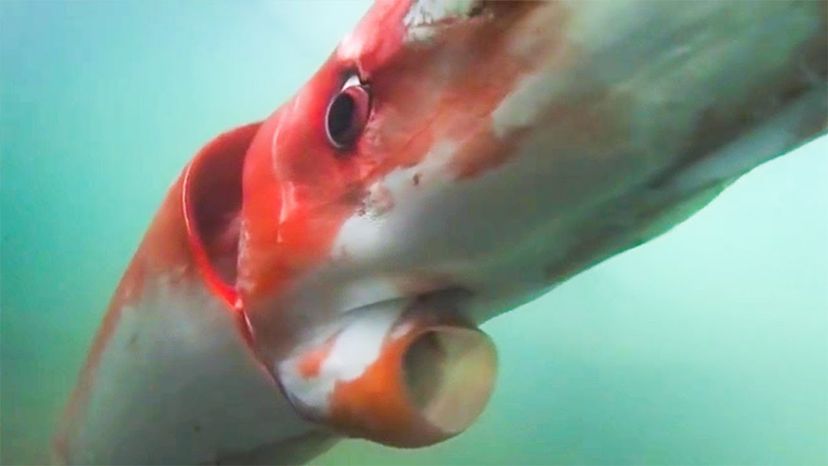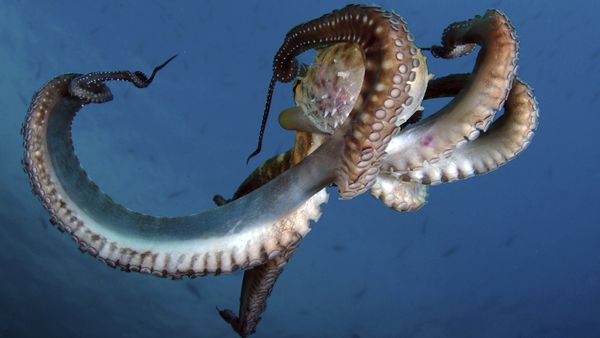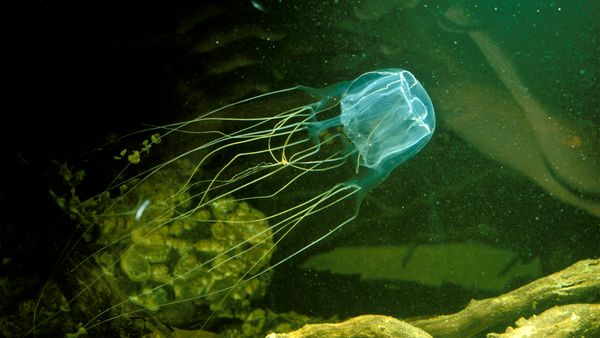
When I told my best friend I was writing an article about giant squid, I received a series of angry expletive-laden texts about her "arch nemesis." "Eyes the size of dinner plates!!!" she typed. "A beak!!!" She's been riled up about the elusive, mysterious species since taking up scuba diving several years ago, and the fear and loathing clearly remains intact. It's understandable — for someone routinely submerging themselves into the depths of the ocean, the idea of a rarely-seen-alive carnivorous invertebrate that weighs over 440 pounds (200 kilograms) and measures around 33 feet (10 meters) long is a little disconcerting.
Perhaps more disconcerting is the fact that these wild creatures, which have rarely ever been spotted alive have been popping up in videos in recent years, very much alive and very, very large (before 2004 they'd only been found as carcasses washed up on beaches or captured by fishermen). So, what's going on under the sea — is a rash of giant squid sightings an indication that these sea giants are taking over the waves? In a word, no. But the sightings do indicate technology is advancing in exciting new ways.
Advertisement
"It hasn't really been a rash of giant squid sightings," says Edith Widder, Ph.D., CEO and senior scientist of Florida's Ocean Research & Conservation Association, Inc. "There have only been two times that the giant squid has been filmed in the deep sea. Both times were using the camera system (Medusa) and an optical lure (e-jelly) that I developed in order to have a new way of exploring the deep-sea — one that doesn't scare the animals away."
Medusa is unlike any recording device before it because it emits a red light that's invisible to most creatures living in the "midnight zone," aka the expanse of pitch black water about 3,280 feet (1,000 meters) below the ocean's surface. The electronic jellyfish that accompanies Medusa down below helps lure creatures toward the camera with an innovative method that takes inspiration from animals' natural cues. "The camera uses red light that is invisible to the eyes of most deep-sea inhabitants and the e-jelly imitates the bioluminescent burglar-alarm display of a common deep-sea jellyfish," Widder says. "Bioluminescent burglar alarms are like a scream for help using light — they're the last-ditch effort of prey that are caught in the clutches of a predator to attract the attention of a bigger predator that may attack their attacker and thereby afford them an opportunity for escape."
There's a good reason people, like my scuba diving friend, have been terrified of giant squid for centuries: until 15 years ago, the only facts known about them were gathered from their massive dead bodies, since live ones had never been seen. Then, in 2004, the first live images of a giant squid were captured, and in 2012, the first video of a giant squid emerged, thanks to Medusa capturing a specimen swimming off Japan's Ogasawara archipelago. It wasn't until this past June that another Medusa-shot giant squid video came to light — this time, of a roughly 10-foot-long (3-meter-long) young swimmer in U.S. waters, around the Gulf of Mexico:
June 19, 2019 marked the fifth deployment of Medusa on this particular expedition, and when Widder and her team examined the videos, they saw undeniable footage of a long-tentacled creature reaching out for the e-jelly. "We knew immediately that it was a squid," Widder and her colleague Sönke Johnsen, wrote in a blog post. "It was also big, but because it was coming straight at the camera, it was impossible to tell exactly how big. But big – at least 10 to 12 feet (3 to 3.7 meters) long."
All these years of underwater chasing begs the question: Why are these animals so camera shy in the first place? "The giant squid has been elusive because our standard methods of exploration using platforms with bright lights and noisy thrusters has been scaring it away," Widder says. "The only reason we even knew giant squid existed is because they happen to float when they die, so dead and dying specimens have been seen and photographed at the surface. How many other animals are there living in the deep sea that we don't know about because we have been scaring them away and they don't happen to float when they die?"
Good — and terrifying — question, indeed.
Advertisement


